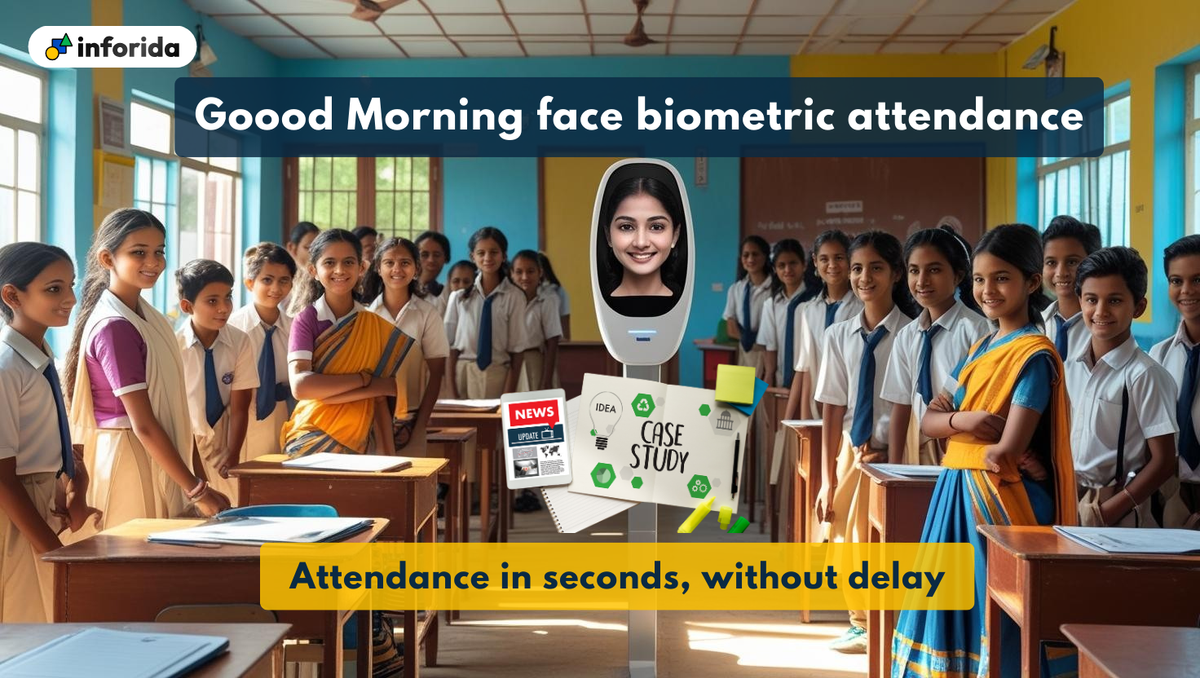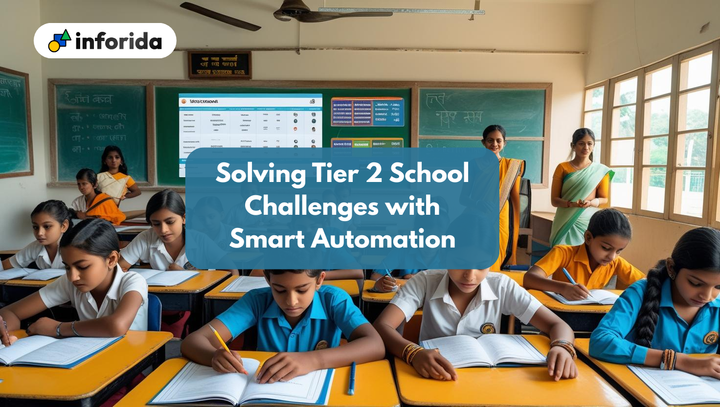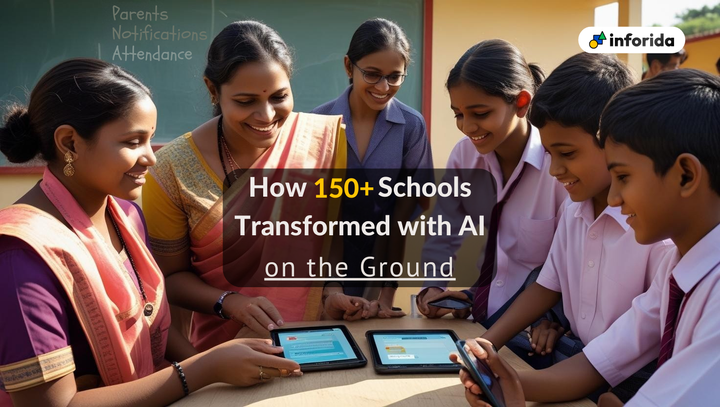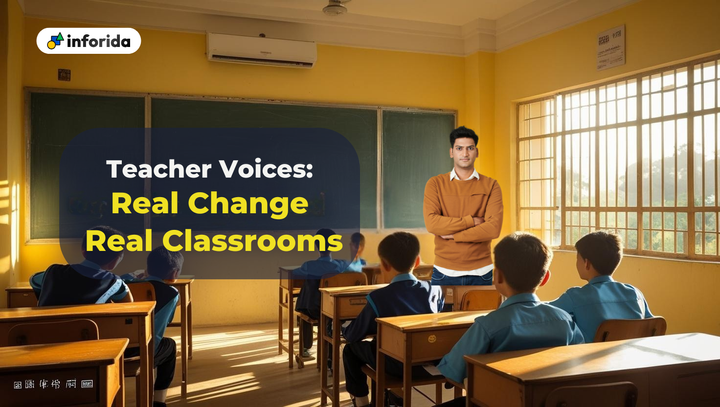Case Study: How a UP School Cut Attendance Time by 70%

When you walk into MS Bright Education Academy in Uttar Pradesh today, you won’t hear the long roll calls that used to eat into class time. Just a quiet beep as students pass a biometric screen, and within seconds the class is ready to begin. It wasn’t always like this. Until recently, teachers here spent nearly 12 minutes per class taking attendance.
Across 25 classes, that meant five hours lost every day. It wasn’t just time. Mistakes crept in, students occasionally marked for friends, and administrators dreaded the end-of-month grind of compiling registers into reports.
Principal Sikha Verma knew something had to change. “We wanted teachers to focus on lessons, not on ticking boxes,” she said. The solution came in the form of Inforida’s ERP, powered by the Goood Morning face biometric attendance. The idea was simple: let AI handle what paper registers couldn’t.
From Chalk and Registers to Face Recognition
The transition began small. In the first week, devices were installed in senior classrooms while teachers were trained. By week two, students in Grades 9 to 12 were already walking in, scanning their faces, and settling down faster than ever before. By the third week, the entire school was on board. What once felt like a big leap into technology became routine almost overnight.
Parents were kept in the loop throughout. They received clear notes about how the system worked, where data was stored, and the school’s policies on consent and privacy. That transparency helped build trust, especially in a community where digital monitoring is still a sensitive subject. Inforida’s role-based access controls and encrypted storage ensured data security was never an afterthought.
Time Saved, Accuracy Gained
The impact was visible almost immediately. What used to take 12 minutes in a class now took just over three. Across the school, that meant 210 minutes saved every day. Teachers reclaimed nearly 35 hours each month—time they could finally put into teaching. Attendance errors dropped sharply too, from around 8 percent in manual registers to under 1 percent with face recognition. Monthly compliance reports, which once cost the admin team six hours of manual collation, started generating automatically with a single click.
It wasn’t just about numbers. Teachers felt lighter. Lessons started on time. Parents received timely notifications if their child missed school. For the principal, it meant peace of mind knowing that compliance was accurate and transparent. What once was a daily frustration became a background process the school barely needed to think about.
Riding the Wave of Change in UP
This shift came at the right moment. In late 2024, the Uttar Pradesh government began actively encouraging biometric attendance for schools, especially those receiving grants. Nationally, the Ministry of Education’s DIKSHA framework flagged biometric systems as part of India’s larger EdTech drive.
On the technology side, face recognition accuracy has now reached over 98 percent in school environments, thanks to better AI models that handle poor lighting and even masks. All of this meant that MS Bright’s adoption of Inforida was not just about saving time—it aligned perfectly with the way education policy and technology are moving.
What Comes Next
With attendance sorted, the school is already looking at what else can be automated. Integrations with Inforida’s fee management system and AI-powered performance analytics are next in line. The leadership team is also considering the bus tracking module, which would extend the same kind of real-time transparency to student transport.
For Principal Verma, the lesson is simple:
“When technology is easy to use and clearly explained, schools adapt quickly. The real win is giving teachers back their time.”
The Numbers Behind the Story
The shift saved 210 minutes daily across the school, equivalent to 35+ extra teaching hours monthly.
Call to Action
If you want your teachers to spend less time on roll call and more time teaching, it’s worth seeing how biometric attendance can fit into your school. Book a demo with Inforida and explore how simple automation can free up hours every week.
FAQs
- Is biometric attendance allowed in Indian schools? Yes. Many states, including UP, encourage digital attendance under education modernization initiatives. Schools must ensure consent and data privacy.
- How accurate is face recognition for K-12 schools? Modern systems report over 98% accuracy, even in varied lighting, with built-in error correction.
- Does biometric attendance replace teachers’ control? No. Teachers still review and approve records but avoid manual entry work.
- How is student data kept safe? Inforida uses encryption, role-based access, and limited retention policies.
- What about parental consent? Schools must seek written consent from parents and inform them about data use and storage.
- Is it cost-effective for smaller schools? Yes. Schools save on paper, admin hours, and errors, making ROI positive within months.




